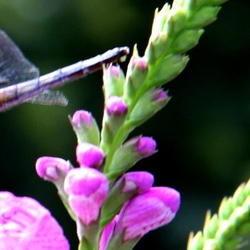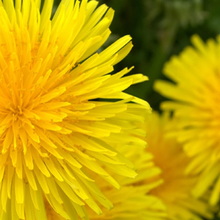Bugs are nearly inevitable in the casual, "cold" composting that happens in a majority of backyard composts. But don't let these small, multilegged, unfurry denizens of the heap worry you. Bugs move in wherever they find something they can eat and a nice place to live. Occasional overwhelming or offensive bugs can be reduced or avoided with closer attention to basic compost technique. For the most part, you can and should learn to tolerate a healthy bug population. It's simply a normal part of passive composting.
The good
Isopods, better known as pillbugs, sowbugs or woodlice, are common permanent residents of the general compost area. So are slugs. Both adore damp, dark nooks and crannies with access to rotting plant matter. Several types of flies and some beetles, and the offspring of both, are transient compost residents. Adult flies constantly scan the area and lay eggs on good larval food sources. The squirmy larvae of tiny fruit flies and of larger black soldier flies are eager eaters of "green" compostables like coffee grounds and kitchen waste. All these critters come to enjoy the banquet of moist, rotting goodness that you've set out. They can start eating that waste as soon as you've dropped it. The vigorous action of hungry bugs can help aerate the material - the bugs tunnel as they eat. They can even help warm a cool pile in their enthusiastic zeal to consume.
These creatures find your compost on their own. Simply offer what they like and they will come forth and multiply. As they grow, eat, and excrete, they boost the populations of bacteria and fungus in compost. Fungi and bacteria are essential in the degredation process, and they serve as earthworm food, too. Finally, bugs around the bin can be an excellent food source for birds. Wild birds linger in your richly populated garden and stand ready to help with summer pests. Chickens go crazy over highly nutritious grubs and larvae harvested from compost.
 |  |  |
Isopod, commonly called woodlouse, sowbug, or roly poly bug, is frequently found near compost piles. | Garden variety centipede doesn't help the compost process. It preys on the many other tiny bugs living in rotting vegetation. | C-shaped grub probably from a beetle in the Scarab family. Some Scarab beetles cause problems elsewhere in the garden, so you may want to pick these out of compost piles. |
The bad
The compost bug crowd can sometimes be troublesome, not to your compost directly, but to you or your garden. Fruit fly (vinegar fly, fungus gnat) swarms can be annoying in midsummer, if the pile gets overloaded with fresh vegetable and fruit waste. Houseflies that feed on garbage can visit your compost; houseflies do process waste, but also carry disease and invade homes. Slugs and sowbugs that hang out around the dark recesses of the compost area certainly might wander over to your strawberry or lettuce bed. Ants and bees sometimes colonize a portion of a compost pile. Ants or bees don't particularly aid the decompostion process, and can interfere with your compost use. And some baby beetles (grubs) can take up residence in compost. The classic, letter-C shaped, white, creepy grub may be a young beetle in the Scarabaeidae family. These white grubs in the compost could potantially grow into beetles that feed on your garden plants or lawn.
The ugly!
Occasionally, compost visitors fall into the really creepy, but otherwise innocuous, class. They typically do not play a major role in the decay process. Centipedes and spiders haunt the pile in search of a meal, preying on plentiful microlife. Predatory beetles could come by on patrol for tiny prey. Earwigs enjoy rotting or tender vegetation and the occasional meal in the compost bin. Earwigs do not seem as fond of compost area as they are of simply living right in the garden, under mulch or nestled in tight spaces up on live plants. Wireworms prefer to eat live plants or prey but may be found in compost.
Living with bugs in compost
A well-managed compost system will foster just enough bug action for efficient processing. Follow these tips for good composting and a healthy bug level.
- Keep the moisture level at the equivalent of a squeezed-out sponge. Start up with a proper dampness and add water periodically if needed.
- Chop or shred compost matter, so it will be eaten or decayed quickly. Finished compost is not a bountiful banquet for bugs.
- Foster black soldier flies. These powerhouse compost crawlers especially love coffee grounds. The voracious larvae are brownish, straight and slightly bumpy. Adults look like small black wasps, have no bad habits, do not carry disease, and are rarely noticed. Soldier fly larva discourage the presence of housefly maggots.
- A few C-shaped grubs are probably innocent, but can be picked and destroyed. Birds love to eat grubs.
- When tiny fly swarms overwhelm, cover fresh wet waste with dirt, or bury it WELL into the pile where flies can't go. (Sprinkling dry leaves on top of wet waste doesn't keep flies off.)
- Houseflies are highly attracted to meat waste and pet manures; these materials are not recommended as compost ingredients. Fresh corncobs also draw houseflies; bury them well.
The verdict:
Bugs are part of the ecosystem that turns your waste into a valuable soil additive. None of them are highly dangerous to humans, except in the rare case of bee allergy or poisonous spiders. If you can get over the ick factor, you may come to appreciate the benefits of a healthy bug population in the compost bin.

















